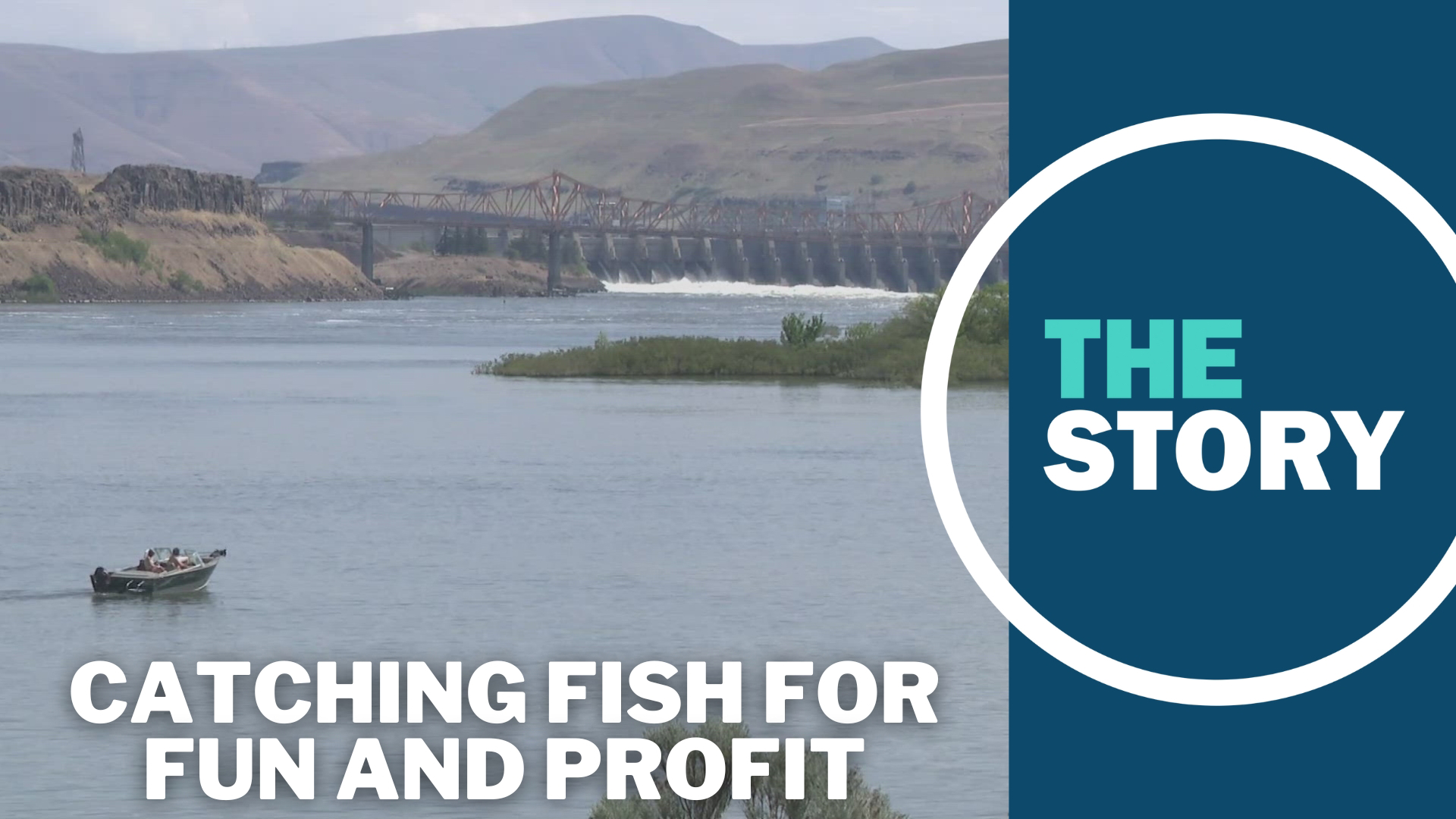THE DALLES, Ore. —
There’s money swimming in the Columbia River, if you can catch it.
Almost every day around noon between May 1 and Sept. 30, anglers line up near the boat ramp at the marina in The Dalles to get their catch tallied at the Pikeminnow Sport Reward Fishery Program station.
Some are more successful than others. On a recent Thursday, one fisherman patiently pushed his bucket forward as the line progressed, toting close to 40 pikeminnow. Another fisherman carried only two fish, one in each hand.
In return, they each picked up vouchers, redeemable for cash, for every fish they caught over 9 inches.
“I go out at daylight every morning and come in at noon,” John Crompton explained as he waited to have his fish counted. “Last year was my best year. I made $13,640.”
Northern pikeminnow are voracious predators of young salmon and steelhead. To help those imperiled species, the Washington Department of Fish and Wildlife oversees the sport reward program, which aims to keep the pikeminnow population in check.
The goal isn’t to eradicate the pikeminnow completely, just to cut down on the fish that are large enough to prey on young salmonids.
“If we can crop down 10 to 20% of their population, we believe that that will allow savings on juvenile salmonid of up to 40% of what it was before the program started,” said Eric Winther, who has overseen the program for the department of fish and wildlife since its inception in the early '90s. “We have a pay system that incentivizes anglers to fish longer.”
The first 25 pikeminnow will net $6 per fish. From fish 26 to fish 200, each pikeminnow brings in $8. After 200, every fish is worth $10. Some fish are fitted with tags, internally and externally, and catching one of those will earn an additional $200 to $500, depending on the type of tag.
“The more you catch, the more you get paid,” Winther said.
And the best anglers are bringing in serious money.
“Our top angler last year made just a little over $69,000 in five months,” said Winther. “The highest reward ever paid out was, I believe it was either 2016 or 2017, about $119,000.”
There are 20 pikeminnow sport reward fishery stations on the Columbia and Snake rivers. To take part, anglers simply register before they fish, then bring in their haul to be counted at one of the stations when they’re done.
But Winther offered some words of caution to those who might be thinking about quitting their jobs to fish pikeminnow full time. The top earner from last year was sometimes catching as many as 100 fish in a single day.
“To do that, he's essentially living in his boat for five months, so not everybody can do that,” Winther said. “They have modern boats, modern electronics, high quality fishing rods and tackle. That doesn’t mean you can't catch them with a bobber and worm, but these guys are pretty serious.”
The average pikeminnow angler, Winther said, usually catches about seven or eight pikeminnow per day.
Josh Ashline, predation and harvest lead with the Bonneville Power Administration, explained why the agency pays for the program.
“When the dams went in, we made the habitat for pikeminnow just a little bit better, which made their populations go up just a little bit,” Ashline said. "The pikeminnow also found that it was a lot easier to predate the juvenile salmon near the dams.”
Of course, the pikeminnow isn’t the only threat facing the Pacific Northwest’s salmon and steelhead. Avian predators – seagulls, terns and cormorants – also have a taste for the young fish. Once salmon get a little older, they face hungry sea lions that also gather at the foot of the region’s dams to feast.
Warmer waters and less-predictable river flows, caused in part by climate change, have also made it more difficult for salmon to return to their native spawning grounds.
For Steven Bennett, who came from Longview to fish near The Dalles, helping salmon is as good a reason as any to come out. But the money doesn’t hurt, either.
“I'm getting paid to go fishing, doing something I really love and you know, my parents have always loved fishing for salmon and steelhead, so this does help,” he said.

